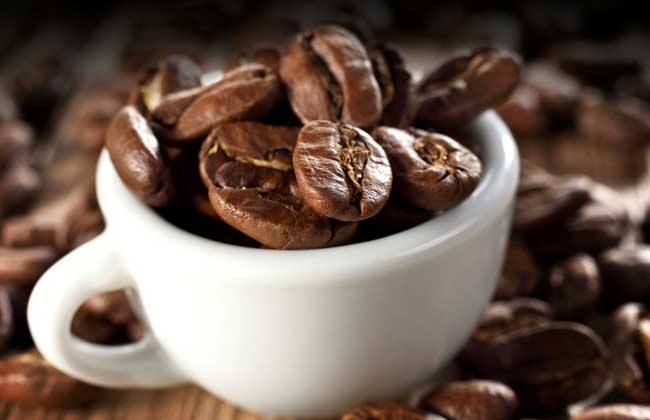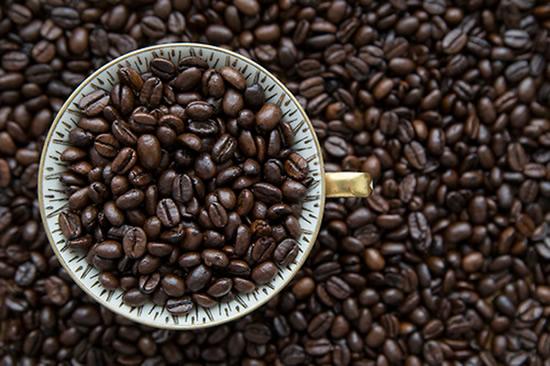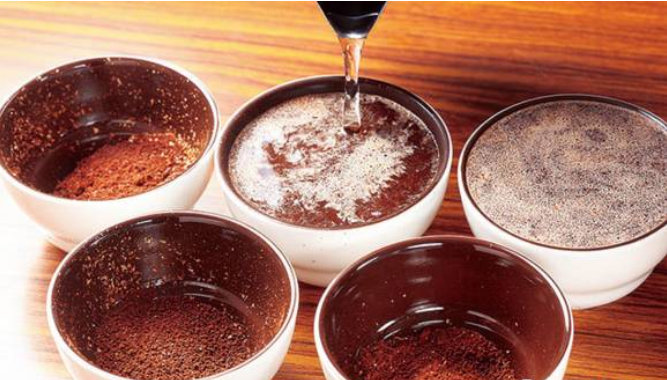What is a cup test? The history of the cup test and etiquette introduction
Follow the caf é (Wechat official account vdailycom) and found that Beautiful Cafe opened a small shop of its own.
The behavior of cup testing is a very inclusive activity, the input and output of coffee products are non-professionals as the core, the more people involved, the stronger the authenticity, the higher the degree of acceptance of the product by customers. The following editor introduces you all kinds of coffee cup tests.
01
What is a cup test?
Coffee Cupping, coffee cup test, is a coffee sensory evaluation method, which can judge the quality of a cup of coffee and find out the advantages and disadvantages of coffee bean flavor.
The cup test adopts standardized baking, extraction and sipping methods, and through the joint use of smell, taste and touch, the abstract senses such as aroma, taste and taste of coffee are transformed into scores for coffee evaluation.

02
The history of cup testing
Coffee cup testing originated from coffee bean trade. In the 1820s, in order to ensure the quality of each batch of coffee, Hills Brother Coffee in the United States began to carry out cup tests on imported coffee before shipment and at the time of delivery, in order to ensure the unity of raw bean quality. Previously, cup testing was a quality control procedure for coffee roasters, and it was a secret to find major flaws.
Coffee cup testing has developed from cheating prevention in the past to identification, evaluation and even competitions. In 1982, the American Fine Coffee Association was founded, setting off a wave of boutique coffee. In 1985, Ted Lingle published the Coffee Cup tester Handbook and other books, and unified standards, so that the cup test has a basic guidelines.
In 1999, George Howell held the first "extraordinary Cup" (Cup of Excellence), referred to as COE, boutique coffee evaluation contest in Brazil, which further promoted the upsurge of coffee cup testing.
03
The etiquette of cup testing
Cup testing is often an activity carried out by many people, and many factors such as environment, smell and so on will affect the accuracy of cup testing. Therefore, we need to follow some cup testing etiquette to ensure the professionalism of cup testing.
1. A friend with long hair tied up his hair.
two。 Don't wear perfume.
3. Be sure to have no body odor before attending
4. If possible, it is suggested to bring your own cup tester.
5. Those who catch cold should not participate in the cup test as much as possible.
6. Avoid getting too tired, usually 2-3 hours after getting up
7. Avoid cup testing immediately after eating
8. Avoid cup testing immediately after brushing your teeth or gargling.
9. No chewing gum or mints
10. Forbid talking and avoid influencing each other.
11. Try not to touch the bowl to smell the dried incense.
twelve。 Don't hold a spoon.
13. Try to keep quiet. If you need to communicate, you can retreat to a place that does not affect the progress of the team.
14. Don't stay for a long time, so as not to hinder the progress of the team
15. Don't have two or more spoons in the same cup!
16. If you need to spit a cup, please pay attention to and deal with your own cup.
17. After each sip of coffee, remember to wash the spoon and gently dip it on the paper towel on the table to dip away the residual liquid.
18. If you need to take a statement, step back as far as possible to a position that does not affect the testing of others.
Important Notice :
前街咖啡 FrontStreet Coffee has moved to new addredd:
FrontStreet Coffee Address: 315,Donghua East Road,GuangZhou
Tel:020 38364473
- Prev

Introduction to the wet planing method of Indonesian coffee beans
Following Cajun (vdailycom on Wechat official account) when you find that Beautiful Cafe has opened a small shop of its own, you will immediately think of Mantenin, the tough guy in the coffee circle, characterized by low acidity, high mellow thickness, slight herbal flavor and woody flavor. Soil and water environment is an important reason that affects it, but what is more important is Indonesia's unique traditional coffee treatment method: wet planing. Wet planing
- Next

How to prepare for the cup test? Introduction to the tools, standards and processes of cup testing
When testing the cup, make the coffee flow back and forth in your mouth and make full use of your sense of taste and smell to feel the flavor characteristics of the coffee. It transforms the subjective and different sensory experience into quantitative data with practical value to guide people's practical decisions, such as buying, selling, sharing experience and so on. So how to carry out the cup test? Next, we will introduce the tools, standards and processes of cup testing.
Related
- What is the meaning of lactic acid fermentation with coffee bean treatment?
- How to judge the state of foam by sound?
- How does the latte pull out the unicorn pattern? Come to get for a little trick to improve the flower pull!
- Will flower pulling affect the taste of the latte?
- Do you know the history of coffee?
- The difference between honey treatment and sun washing what is raisin honey treatment?
- What kind of milk can a novice use to make coffee foam to keep the foam longer? The correct method and skills of milking tutorial sharing
- Why do washed coffee beans taste sour? Flavor characteristics of washed Coffee
- Introduction to the skill of how to practice the size and height of water injection around the circle of hand-brewed coffee
- How do beginners practice coffee flower drawing from scratch?

